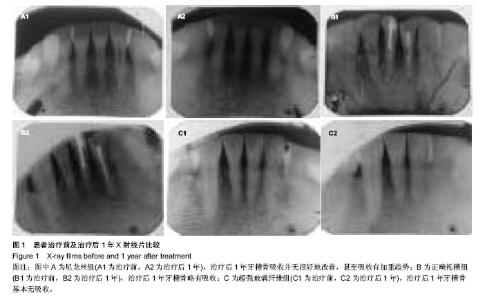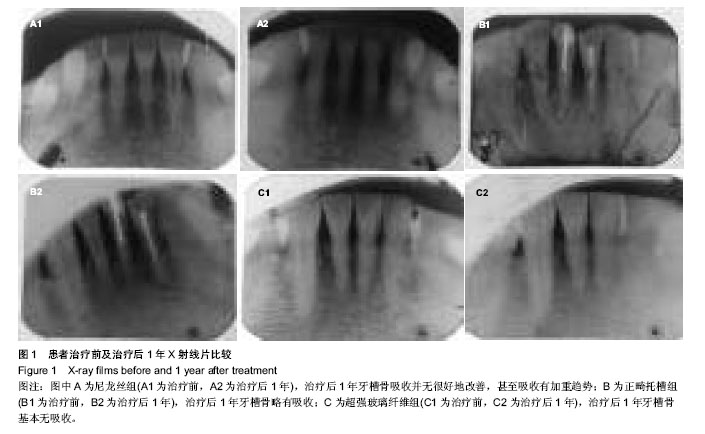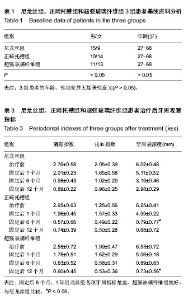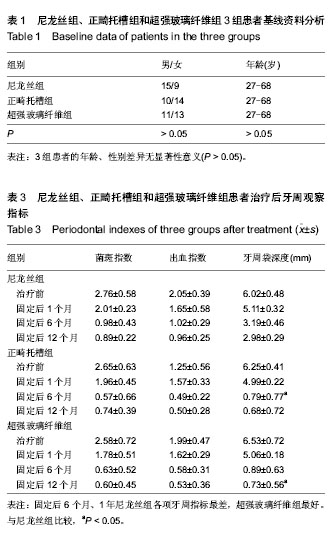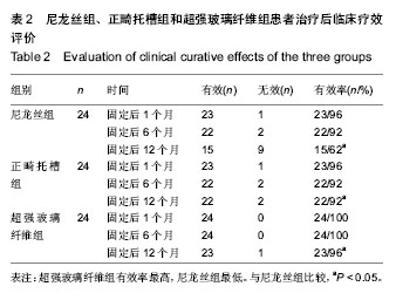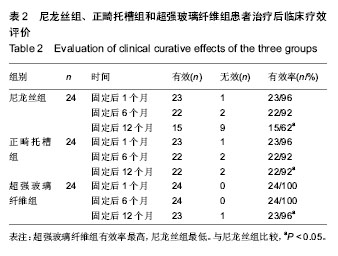[1] 徐婕,徐斌.高强纤维牙周夹板治疗老年重度牙周炎的疗效[J].中华老年学杂志,2012,8(32):564-3565.
[2] 张翼,付志英.超强玻璃纤维在保存老年人松动牙齿中的临床研究[J].牙体牙髓牙周病学杂志,2005,15(7):390-392.
[3] 曹采方.牙周病学[M].4版.北京:人民卫生出版社,2001:72-74.
[4] 吴岩.超强玻璃纤维牙周夹板固定牙周病松动牙的临床研究[J].辽宁医学院学报,2013,34(2):61-62.
[5] Noue K. Case of prosthetic treatment for severe periodontal diseas et. Nihon Hotetsu Shika Gakkai Zasshi.2008;52(2): 228-23l.
[6] 梁晓敏.百强固位纤维在松牙固定术中的疗效观察[J].临床医学工程,2011,18(1):71-72.
[7] 马轩祥.口腔修复学[M].5版.北京:人民卫生出版社,2004: 427-432.
[8] 康艳凤.玻璃纤维牙周夹板修复治疗中的问题及护理[J].中华现代护理杂志,2011,17(19):2299-2300.
[9] 袁慧娟.固位纤维牙周夹板配合派丽奥治疗重度牙周病的疗效分析[J].实用口腔医学杂志,2012,28(6):777-779.
[10] Bemal G, Carvajal JC,MUrfIoz-Viveros CA.A review of the clinical management of mobile teeth. J Contemp Dent Pract. 2002;3(4):10-22.
[11] Kleinfelder JW, Ludwigt K.Maximal bite force in patients with reduced periodontal tissue support with and without splinting. J Periodont01. 2002;73(101):1184-1187.
[12] Mosedale RF.Current indications and methods of periodontal splinting, Dent Update. 2007;34(3):168-173.174.176-178.
[13] 孟焕新.牙周病学[M].3版.北京:人民卫生出版社,2010:155-174.
[14] Tanaka E,Ueki K,Kikuzaki M.The importance of splinting of teeth in the therapy of periodontitis. Source Mmerva Stomatologica. 2006;55(3):87-97.
[15] 黄健清,高强.纤维牙周夹板配合牙得安牙粉治疗老年中重度牙周病疗效分析[J].中华老年口腔医学杂志,2011,9(1):26-29.
[16] 李玉玲,林春华,陈放,等.可摘式钛合金牙周夹板对慢性牙周炎松动牙的固定[J].现代口腔医学杂志,2005,19(5):459-460.
[17] Linhe J, Nyman S, Ericsson. rauma from occlusion.Lmdne J.Karring T,Lang NP,eds.Clinical Periodontology and Implant Dentistry.4”ed, Oxford BlackWell Munksgaard.2003:352.
[18] 郑立娟,马卫东.下前牙纤维加强树脂夹板三维有限元应力分析[J].口腔医学研究,2012,28(9):911-913.
[19] Meiers JC, Duncan JP, Freilich MA. Preimpregnated, fiber-rein-forced prostheses. Part II. Direct applications: Splints and fixed partial dentures. Quintessence Int. 1998; 29:761-768
[20] 赵然,陈光.弹性粘结固定技术治疗外伤松动牙的临床分析[J].中国美容医学,2013,22(6):666-668.
[21] 刘妍.高强度玻璃纤维舌侧保持器的应用研究[J].华西口腔医学杂志,2010,28(3):292.
[22] Meiers JC, Duncan JP, Freilich MA, et al.Preimpregnated, fiber-reinforced prostheses. PartII. Direct applications: Splints and fixed papal dentures. Quintessence Int.1998;29:761-768.
[23] 郑立娟,马卫东.纤维加强树脂夹板固定下颌前牙应力分布的有限元分析[J].实用口腔医学杂志,2012,28(6):691-694.
